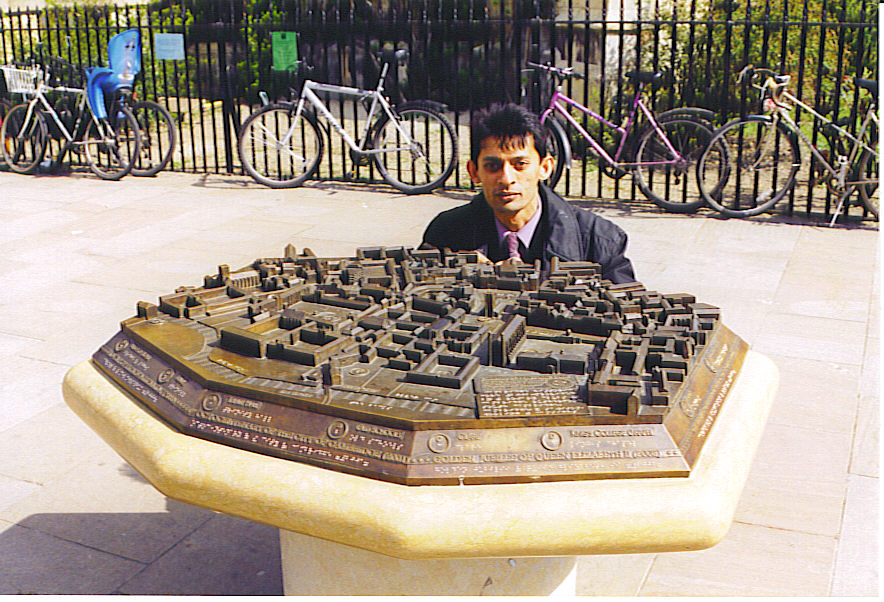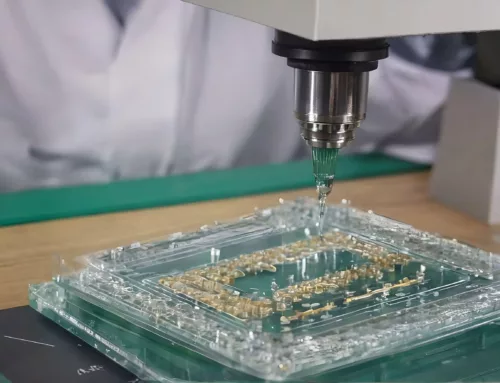On the 16th of May Delft Solids Solutions together with partners TNO, Hosokawa Micron, DSM / Delft University of Technology, TOP B.V., Orffa and Buro Blauw will organize a Dustiness seminar in which we will discuss techniques, developments, protocols as well as causes and prevention methods. We will discuss standards for assessment of dustiness such as DIN 55992 and EN 15051, for dust explosions and ATEX, regulations of the European Food Safety Authority (EFSA), and of course the suppression of undesired dust particles and their impact. It is our distinct pleasure to introduce you to Dr. Arief Dahoe one of our speakers for the Dustiness day 2017 His talk will be about “Dust Explosions: Phenomenology, Dynamics and Mitigation Dr. Arief Dahoe at Cambridge marquette Please tell us a bit about yourself Dr Dahoe? My name is Arief Edsel Dahoe. I am the owner of Delft Explosion Solutions. A company that conducts scientific investigations into problems pertaining to explosion safety and hydrogen safety for a clientele consisting of industrial organizations, universities, research institutions and military establishments. Knowledge gained from these investigations is disseminated via the ExplosionWiki platform. I obtained an MSc in Chemical Engineering, and, a PhD in Flame Propagation and Explosion Modelling from Delft University of Technology. I continued to apply and extend my expertise at Delft University of Technology, the University of Cambridge, Eindhoven University of Technology, the University of Ulster, and, the European Network of Excellence HySafe. I’ve been involved in both theoretical and experimental research. From 2004 to 2016 I served as a Lecturer in Hydrogen Safety at the University of Ulster. There is more but this covers the basics (he laughs brightly). What will you discuss during your lecture? My lecture will be about the phenomenology, the dynamics and mitigation of dust explosions. To elaborate on this let’s start with the basics. Many common materials which are known to burn can generate a dust explosion, such as coal and sawdust. The general rule is that the finer the material the higher the risk for explosion. The finer a particle becomes, the larger its surface area and the more it interacts with the surrounding air. As a result a dispersion of fine particles in air becomes prone to ignition. For example within the food and feed industry a common product like cornstarch is used. If you mix the cornstarch with air, a 10mJ spark will suffice to trigger an explosion. This ignition energy is comparable to a static spark discharge that occurs when your finger touches a particular surface. Hydrogen is even worse: 0,06 mJ. This corresponds to Invisible sparks which are always present on surfaces such as normal types of clothing for example. Let me be clear on this, a surface is almost always charged, there are only very few materials like untreated wood for example that are less charged. So with a hydrogen leak there will almost certainly be an explosion. With dust explosion you can avoid ignition sources by grounding the entire facility. Mechanical ignition sources such the potential of falling metal (tubing for example) can be avoided. Open fires or other spark generating agents can be managed in controlled conditions, prevention like fire suppressant materials generally reduces the risk of dust explosions. So to recap many seemingly harmless organic materials can also be dispersed into a dangerous dust cloud. Materials such as grain, flour, starch, sugar, powdered milk, cocoa, coffee, and pollen. Also powdered metals (such as aluminum, magnesium, and titanium) can form explosive suspensions in air, if finely divided. So in my Lecture I will discuss the phenomenon of dust explosions and aspects relevant to preventing or mitigating a dust explosion. Let me make it clear by assigning a number to it: 80% of what the industry produces is based on particles somewhere within the process chain; 70% of the aforementioned 80% consists of flammable materials involve the risk of dust explosions. This is why we will also touch upon the various standards to maintain safety.
. Could you elaborate a little further on what you will discuss on the standards during the Dustiness seminar? Laws such as the ATEX directive. The ATEX directive consists of two EU directives describing what equipment and work environment which is allowed in an environment with an explosive atmosphere. ATEX derives its name from the French title of the 94/9/EC directive: Appareils destinés à être utilisés en ATmosphères EXplosibles. As of July 2003, organizations in EU must follow the directives to protect employees from explosion risk in areas with an explosive atmosphere. There are two ATEX directives (one for the manufacturer and one for the user of the equipment). With the ever expanding safety laws the focus is on fulfilling the requirements. The ASTM standards such as DIN are there to facilitate compliance with the ATEX directives. We will discuss the standards in broad strokes. The standards are there to help keep industrial processes and unit operations up to the safety levels of as required by required law. Who are the people best suited for this course and what would you like for the people attending to take away from this course? Most people will be able to follow the course. You need a BSc, MSc level in an engineering discipline (chemical, mechanical, civil, aerospace) or in physics, chemistry, applied mathematics and economics. Those having practical experience with powder processing and process technology will benefit enormously from attending. Since the seminar day includes a lot of examples from day to day operations, the emphasis will be on that more than the heavy science behind it, although there will be some science needed to understand the mechanisms of explosions. After the seminar all lecture material and literature referenced (books, scientific papers, reports, standards) shall be made available via our ExplosionWiki
Who would best benefit from the information given in this course? People dealing with combustible mixtures involving dispersed particles and people interested in having more background in dust prevention and management. You can be a scientist, technician working in a lab or a process operator in charge of a solids producing or handling factory. Thank you for your time and enthusiasm. It is a truly fascinating subject of great importance. I am looking forward to hearing your lecture during the dustiness day. Thank you. It has been my pleasure.





